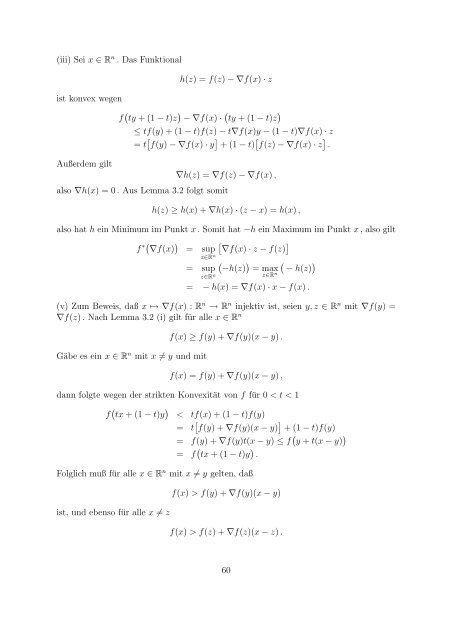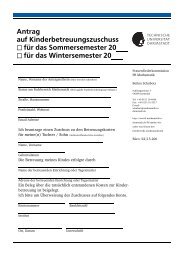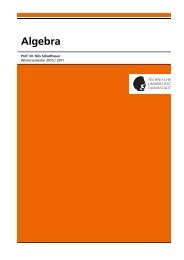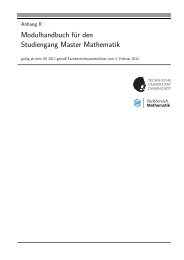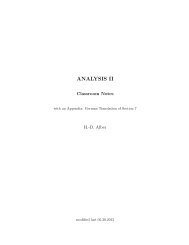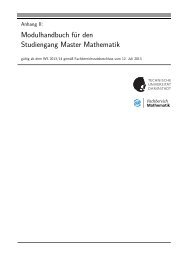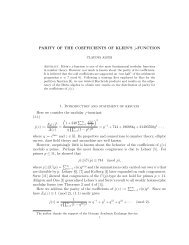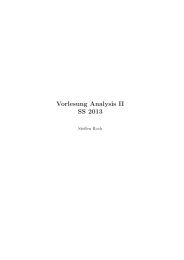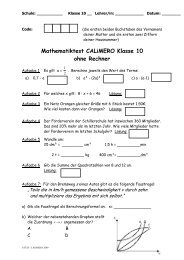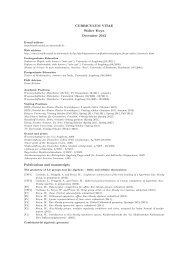Variationsrechnung und Sobolevräume - Fachbereich Mathematik ...
Variationsrechnung und Sobolevräume - Fachbereich Mathematik ...
Variationsrechnung und Sobolevräume - Fachbereich Mathematik ...
Erfolgreiche ePaper selbst erstellen
Machen Sie aus Ihren PDF Publikationen ein blätterbares Flipbook mit unserer einzigartigen Google optimierten e-Paper Software.
(iii) Sei x ∈ R n . Das Funktionalist konvex wegenAußerdem gilth(z) = f(z) − ∇f(x) · zf ( ty + (1 − t)z ) − ∇f(x) · (ty+ (1 − t)z )≤ tf(y) + (1 − t)f(z) − t∇f(x)y − (1 − t)∇f(x) · z= t [ f(y) − ∇f(x) · y ] + (1 − t) [ f(z) − ∇f(x) · z ] .∇h(z) = ∇f(z) − ∇f(x),also ∇h(x) = 0. Aus Lemma 3.2 folgt somith(z) ≥ h(x) + ∇h(x) · (z − x) = h(x),also hat h ein Minimum im Punkt x. Somit hat −h ein Maximum im Punkt x, also giltf ∗( ∇f(x) ) [ ]= sup ∇f(x) · z − f(z)z∈R n ( ) ( )= sup −h(z) = max − h(z)z∈R n z∈R n= − h(x) = ∇f(x) · x − f(x).(v) Zum Beweis, daß x ↦→ ∇f(x) : R n → R n injektiv ist, seien y,z ∈ R n mit ∇f(y) =∇f(z). Nach Lemma 3.2 (i) gilt für alle x ∈ R nGäbe es ein x ∈ R n mit x ≠ y <strong>und</strong> mitf(x) ≥ f(y) + ∇f(y)(x − y).f(x) = f(y) + ∇f(y)(x − y),dann folgte wegen der strikten Konvexität von f für 0 < t < 1f ( tx + (1 − t)y ) < tf(x) + (1 − t)f(y)= t [ f(y) + ∇f(y)(x − y) ] + (1 − t)f(y)= f(y) + ∇f(y)t(x − y) ≤ f ( y + t(x − y) )= f ( tx + (1 − t)y ) .Folglich muß für alle x ∈ R n mit x ≠ y gelten, daßist, <strong>und</strong> ebenso für alle x ≠ zf(x) > f(y) + ∇f(y)(x − y)f(x) > f(z) + ∇f(z)(x − z).60


